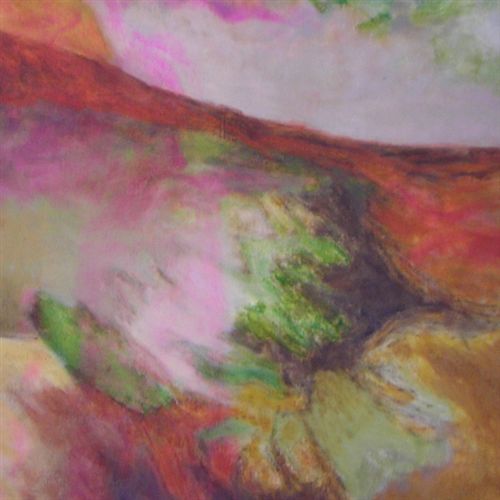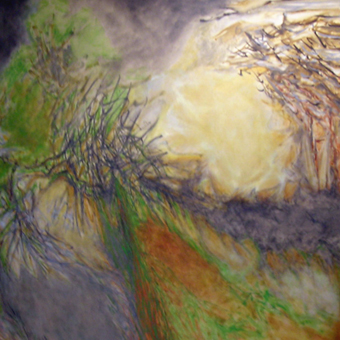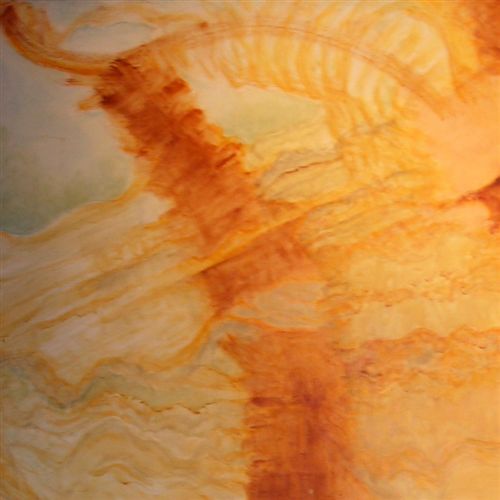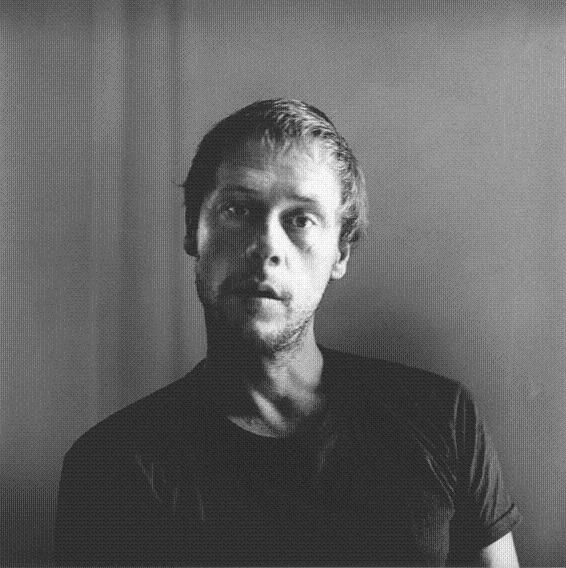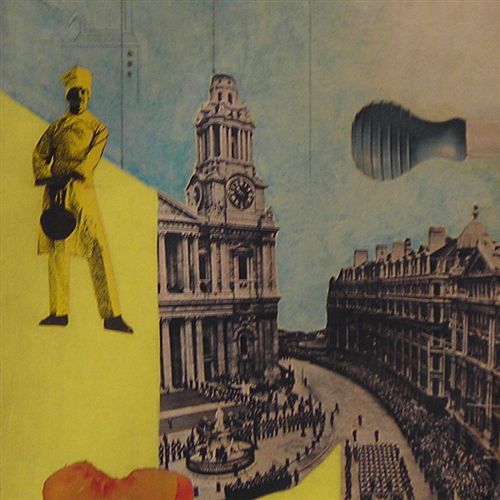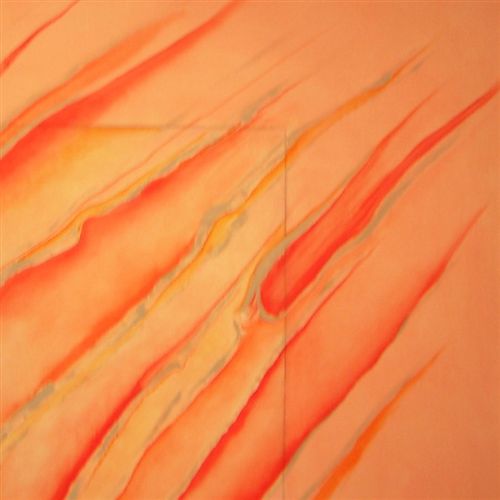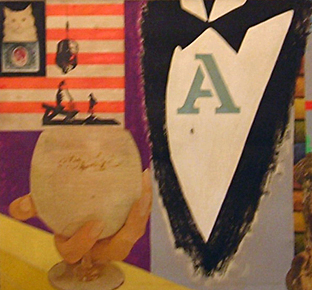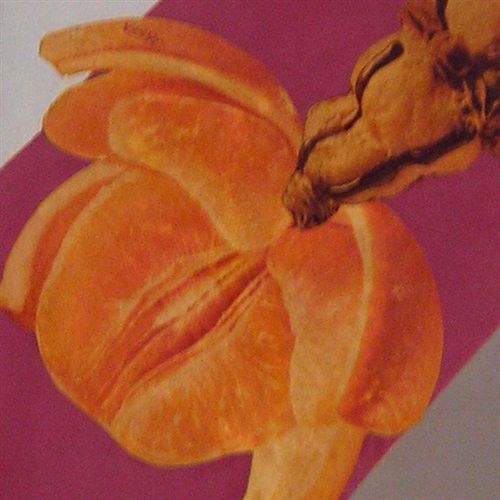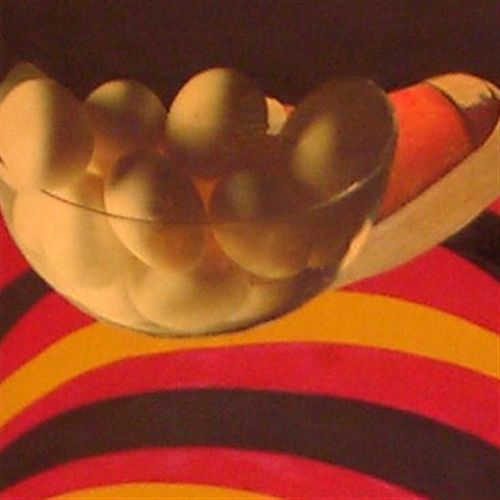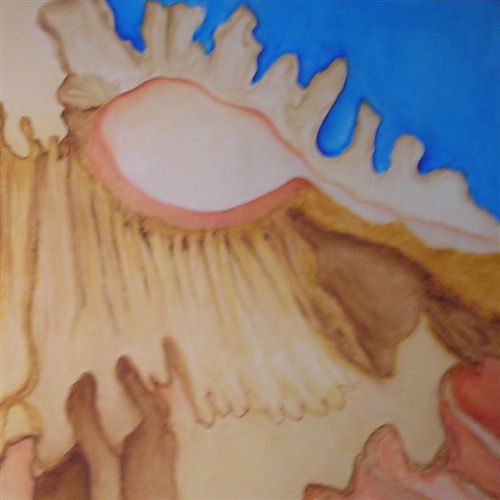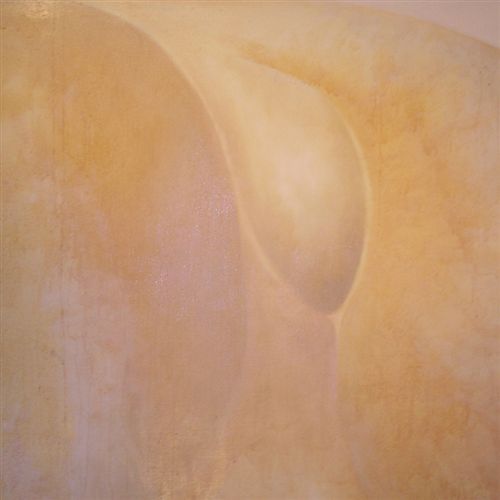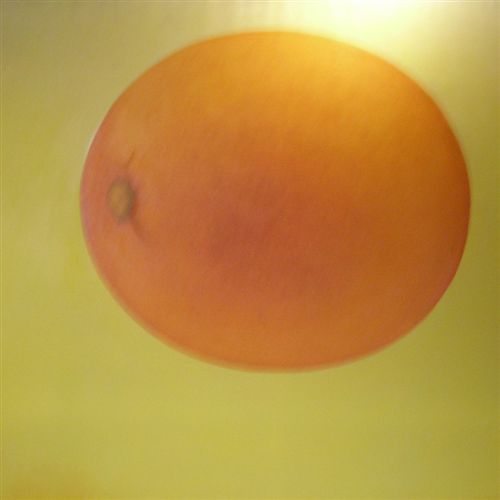CRITICISM, CORRESPONDENCE, COMMENTS.
CANADIAN ART N.19 (March - April 1962)
Paintings by Marion Greenstone show deeply felt contemplations of landscape, though more of an inner landscape than a particularly objective one. Wallace suggests that there is an almost visionary intensity in her use of colour.
MARION GREENSTONE by Christopher Sippel
Interconnected fields of musical maps. Collaged hieroglyphics. Curving, swirling, lunging phantasms. Protozoan cross-sections. Allusions to mythological creatures and magical places. Convergence of calm equanimity and late-20th-century noise.
These are the paintings and collages of Marion Greenstone. In some, the colorations are reminiscent of Rothko or Klee. However, her individual voice speaks loudest and clearest in the images that appear as cross sections of colorful earth or in the hovering, aerial views of well-framed, otherworldly landscapes. There is a Mondrian-like geometrical poise that grounds these works, yet allows them to float freely. Some images even allude to electrical diagrams and circuits, but not at all in a literal sense.
There is a sense that the observer is looking through a microscope into a strange and wondrous new world of microparticles. These allusions act more like zen koans whose answers are deeply embedded in the shapes, colors, lines, and textures of Greenstone's imagery.
Not meant to be translated from one language to another, these balanced and thoughtful paintings are parallel worlds, to be opened up and explored as a complex web of memories, ideas, and painterly process.
KEEPING THE CONTEXT AFTER REMOVING THE CONTENTby Pat Adams
Marion Greenstone has lived an interesting life. Born in New York City, in 1925, Marion received her education there. Having earned a B.A. from Brooklyn College, M.A. from Columbia University, and Diploma from Cooper Union College, Marion decided to live in Italy, where she lived from 1954 to 1956, and later Canada, from 1957 to 1963; two places where she created her art.
A degree in English literature and language has exposed Marion to usage of the imaginary method - the practrice of discriminating fantasies from fact - in art-making. Beginning with abstract geometric forms, her imagery became increasingly objective, reflecting her interest in "keeping the context after removing the content."
Ranging from small pencil and crayon drawing on paper to large-scale mixed media pieces on canvas and with themes from the series of beautiful flowers to more abstract subjects that reflect the essence of the natural world, Marion dealt with an extraordinary array of subjects and mediums.
LETTER TO MARION by Paul Thek
Dear Marion G
First of all I want to tell you how nice it is to know you such a long time. How good a friend you've been to me - one of the very best in my life - and how much I've learned watching you over the years.
True. True. Someone to watch as a true responder, still attempting to find warm, human friendships - clear & firm & dependable. Why am I saying this I wonder? - I remember exactly why - the last time I saw you in NY we went to see the D.H. Lawrence "Women in Love" & on our way there you said to me how much you thought I was an artist - a real artist. Do you know NOBODY had ever told me that. Nobody had ever put down competition & jealously etc. & just said it openly and honestly - the way you did.
I was so shocked - really - I think I was too shocked to do anything but laugh my way out of it - a common response to sincerity. But before I let another minute go by I want to say how much I thank you for honesty and affection now, after 20 years. Thank you for old friends, and how much you have helped & encouraged. Really, you know it has been tough enough for me too... and how much I admire what you do & I remember the paintings of the early 60's before the shit hit everybody, etc. etc..
I could go on. But somehow here is not the place. I often wonder what you are up to there now. I wish I had a home so I could put up a Marion G. Mary Green, you have been such a good friend to me. A note of calm dignity in a jumble of erratic pretentious poses. I wonder who you are. I miss you & want to say that I think of you & what you've done and I get energy and help from that, & real warmth, an inspiration, dear Marion G. Many, Many thanks.
Love always
Your Paulie
MEMORY OF MARION GREENSTONE by Evelyn Eller
I met Marion Greenstone on the ship to Italy in 1954 when we were both Fulbrights in the painting category. We spent a good deal of time together visiting museums and taking trips with each other or with Myron while in Italy.
We kept in touch throughout the years. Since we both lived in New York, we saw each other frequently either alone or with our husbands. We were all aware of her elegance, intelligence, her love of literature, plants and gardens, and her pleasure in cooking; but what I want to speak about was Marion as an artist.
Most of you know her paintings and drawings, the work speaks for itself, and we have all taken pleasure in it; but what I remember most is our going to exhibitions together and trying to figure out how other artists had used certain materials and techniques. There were countless times while we were walking when she would point out details of architecture, or the light on a building, or the color of the sky. She was always looking up or around her and seeing with an artist's eye and wanting to share these visual experiences with me. She had a wonderful sensibility.
I will miss that special relationship between two people with a love for art and beauty.
A LIFE IN ART by Sigmund Balka
Marion Greenstone, who lived from 1925 to 2005, was an artist of notable talent and left behind a significant legacy. As with other artists who depart leaving substantial bodies of work, there is a need for that wealth of creation to be disseminated by means of exhibitions and catalogues.
Marion Greenstone is an artist who charted her own way and whose work reflects the evolution of her ideas during different decades. She worked in a number of media and made alternately shaped canvases replete with images and large abstract paintings, with a range of works in between. Working in her studio in a lovely old brownstone in Park Slope, Brooklyn, she had the space and opportunity to develop satisfying work of a varied nature.
Her studio in a beautiful house in Park Slope, upscale neighborhood of Brooklyn, has offered adequate space and the opportunity to follow her great artistic inspiration and research over the years. We can say that Marion Greenstone has dedicated her life to art.
THE POP ART OF MARION GREENSTONE by Antonella Baldassarri
We all know that pop art painting and sculpture is based on using elements and objects such as bottles of coca cola, cans of beans, and other often trivial, commonly-used items borrowed from the consumer society. The intent is almost always to demystify or redeem an ordinary object.
In Greenstone, however, strangely there is never this kitsch-type “triviality.” There is, instead, an unusual delicacy, especially in the sense of color. When she intervenes with the brush in the pop paintings, we notice something more refined than many of the well-known assemblages of that period. We could say that although Greenstone undoubtedly was part of this artistic trend for almost a decade, she never abandoned the efficacy of the pictorial and plastic sense of shapes, accentuated by choices of color that are always appropriate and in keeping with her visualization of beauty.
And while we can often recognize an unequivocal style in the various and even very great exponents of American pop art, in Marion Greenstone we find a very different use of color and organization, a valuable search for rules of composition that we rarely associate with pop art.
A pop painting by Greenstone can be contemplated for hours in a search for details and nuances, whereas many other works of different artists of the same period are tremendously striking for their “bomb effect,” their "irony," and their “criticism of the consumer society,” but they seem much simpler in the way they are structured.
MARION GREENSTONE: AN EXPLORER by Marco Agostinelli
Marion Greenstone was an explorer. Her exploration of art led to constant discovery of new interior territories. For Marion creation was the same as discovery. It was both her malady and her cure.
It was her alter ego. And something else comes to mind: her drive. Marion felt the need to create art every day, to expand ordinary time and convert it into interior time and symbolic reality.
Marion Greenstone’s life in art was a long journey with many different itineraries and stopovers. But for her - as for all of us - it’s the journey that counts not those styles or labels which others perforce sometimes assigned to her.
Reference has been made to her bright, cheerful colors. . .but certainly it’s not a yellow, pink, or orange that renders a work cheerful. There is no “cheerful” in the visual arts! Well, what about her pop works? But pop is not entertainment; it’s existential angst, and often critical of American society.
Marion Greenstone’s art was figurative, non objective, abstract, pop and then again figurative. But what does that matter? In all of these phases she only sought and created beauty, which is what really matters.
Marion always thought that art was the best way for her to communicate and, indeed, I believe it isn’t at all difficult to converse with her extraordinary paintings.
THE FREEDOM OF LIGHT by Enrico Idrofano
My main occupation has been photography director for the cinema, but I have always been taken with the light in pictures, the inherent light in color and in the backgrounds of paintings. The freedom of that light is without bounds and sometimes so intense that it is impossible to “illuminate” it artificially.
When a painter “lights up“ a painting with its own light it’s as if she appropriated a ray of sunlight and eliminated any possibility of looking at it in another way. Day is day, sunset is sunset, and night is night. There is often this unmistakeable light in Greenstone’s paintings, a clear sign of an old skill, a centuries-old inheritance from much of the history of ancient art.
Reading of her frequent trips to Italy, I imagined that part of this vocation, this talent, also came from her visits to our museums and perhaps from the “Italian” light. I have imagined her as a Roman artist and that the “orange” illuminating a painting was merely the sun on Piazza di Spagna. Marion Greenstone is “solar” but this does not mean “simple”… in light there can also be bitterness and pain.
MARION GREENSTONE AT THE MOORAT - RAPHAEL ARMENIAN COLLEGE IN VENICE by P.Abate Elia Kilaghbian
Presenting the work of a deceased artist is like accepting an inheritance to promote, cultivate and exhibit in her memory and in her honour. The vocation of the College, in the past as in the present, has always been culture, an international culture open to diverse interior pursuits and experiences.
Marion Greenstone’s journey in art was varied and highly spiritual, especially in her recurrent “dream,” which was a constant search for beauty. Beauty intended in its aesthetic sense but also as integrity and wisdom and, in her personal history, proven in those long years of teaching dedicated, with love for art, entirely to her students.
She herself remarked that she could never abandon that vocation and, for us at the College of Palazzo Zenobio, where we have always dedicated much of our energy to the cultural education of the young, this pursuit makes us feel very close to her. And so we open our doors to an undoubtedly great artist who was also a teacher; and this is truly in keeping with our history and our moral philosophy.
MARION GREENSTONE by Archie Rand
When I believe that an artist has monitored his or her work through commitment and observation, devoid of affectation, I put my trust in that artist's output. In its wake, obligatory aesthetics are unmasked as bombastic. These artists provide us reliable entrance to each work. The pretense of style is considered preening that they reject because it results in paralyzing mannerisms. Tactics disgust them. When one faces their work, that solemn game of discerning the good or the bad painting becomes silly and irrelevant, and any possible failure contains evidence of the specific antidotes for rectificatìon. The result, at worst, is a scrupulous evaluation which, in its courage and vindication, is always breathtaking.
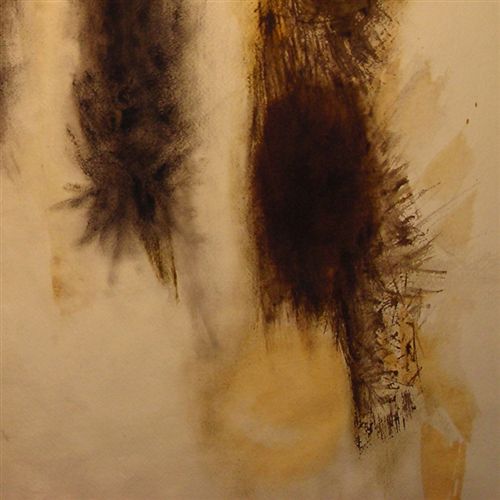
We forestall any hurry to familiarize ourselves with the work of artists whose work we do not know. The assumption is that their work was not sufficiently charged to hack out a clearing to spotlight itself. This is an acculturated reactìon. It makes us forget that Vermeer remained undiscovered until his work was separated from that of de Hooch, or that Van Gogh's sister-in-law maintained his works out of affection and respect until the times could more properly focus on their merits. However, in truth there is a Darwinian decimation of most artists' work, since any society will exact as much cultural nutrition as it needs and discard much of the rest. The best artists know this. They work because they have an obligation to manifest perception.
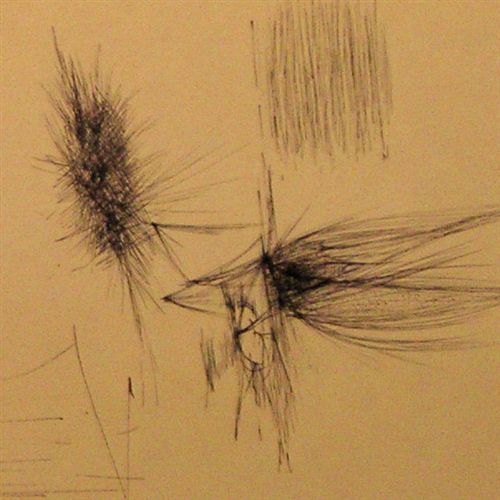
Marion Isaacson was born in New York City in 1925. She graduated from Brooklyn College in 1946 and married Myron Greenstone. She received a degree from Columbia University Teacher's College, attended the Art Students League, graduated from Cooper Union in 1954, and taught at Pratt Institute. Greenstone was awarded a Fulbright Scholarship to work in Italy, which she stretched into a two-year stay. In 1957, she moved to Canada and came back to New York in 1961. She won a municipal mural commission and had some gallery representation. She traveled throughout Europe, to the Middle East and the American West, and spent her final years living and working in her home studio in Brooklyn, New York. Once, when writìng of her past, she said,
"At the age of twenty-one, while I was teaching school, I enrolled in a course with the painter Norman Lewis for one evening a week. For the next three years I devoted all of my spare time and free summers to studying art. Finally I decided to give up teaching and devote all my time to art. I enrolled in the Art Students League where I studied with Julian Levi and Vaclav Vytlacil and also continued to study with Norman Lewis."
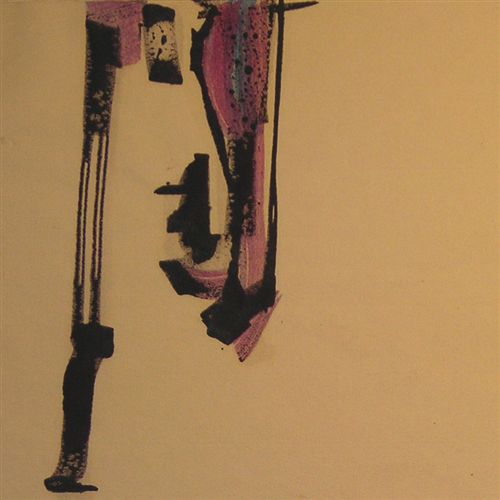
It is clear from her earliest art training that she was prepared for a life of discernment and excellence by a series of radically inventive mentors. Her intelligence and instinct guided her towards selecting three of the most innovative educators of the time. All three of her chosen instructors were both highly marginalized people and fiercely courageous pioneers. Norman Lewis was the major African-American abstract expressionist and his work continues to be a unique and powerful reference, a cornerstone of that movement. Julian Levi was a daring and passionate supporter of work that was instrumentai in creating the transitìon from surrealism to abstraction. He also strongly championed women artists and the introduction of photography to the art market. Vaclav Vytlacil was a legendarily iconoclastic teacher who also taught Twombly, Rosenquist, Rauschenberg, Tony Smith, and Louise Bourgeois. Working with these outstanding teachers, who were among the most unconventional of their era, undoubtedly gave Greenstone permission, for the rest of her life, to indulge her sophisticated questioning and her devotion to painting. With the momentum of this encouragement behind her, reminding her of the integrity necessary for success in the creative act, she never failed to accept the risks necessary to achieve honesty in her work.
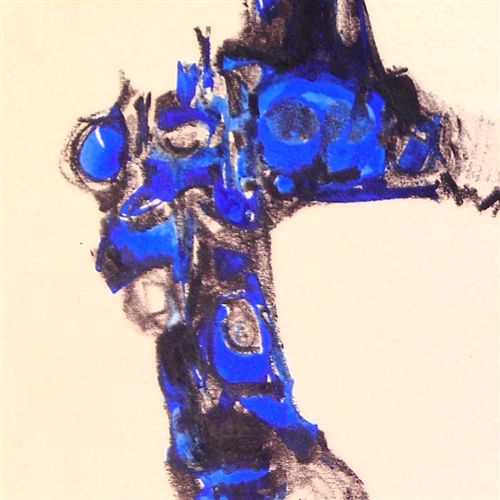
At Cooper she was a key player in a group of friends who are now seen as a famous clutch of truly amazing, historically significant although reclusive, maverick artists. Caught in a bind between the fading pomposity of abstract expressionist romanticism and the nihilist factions which often populated the reacting schools of minimalism, pop art and conceptualism, Greenstone found herself aligned with artists who maintained a deep belief in the narrative momentum of their work while eschewing the grandstanding that went with either camp in the transitional 1950s. It is documented that her Cooper friends included Joe Raffaele, Paul Thek, Ray Johnson and Eva Hesse.
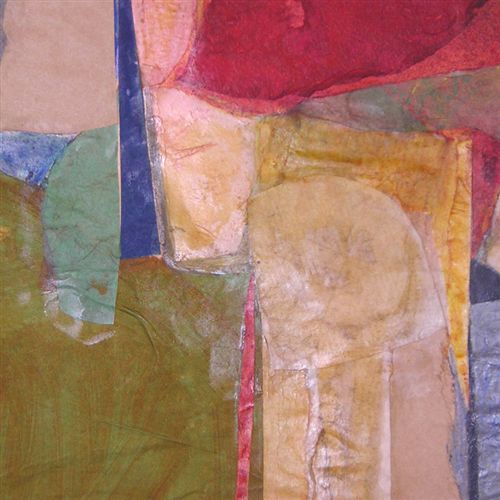
Her circle widened adding Peter Hujar, Wolf Kahn and R.B. Kitaj. More than their mainstream cohorts, this group was what the current artspeak would term "marginalized" people with a prescient awareness of mortality and of the relationship between the human body and myth — subjects for which Jackson Pollock was critically maligned for investigating in his last years. Their unaccepted responses to the status quo were to offer artists alternatives that are being busily mined today.
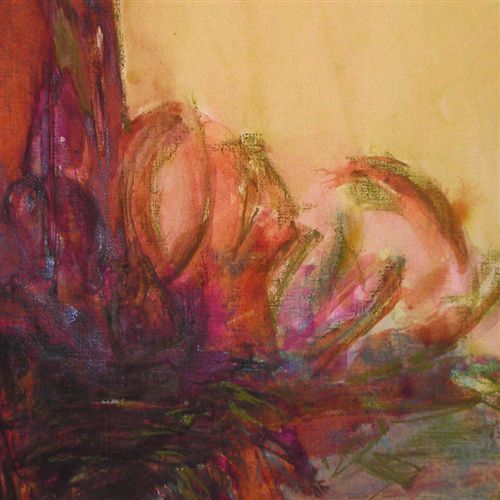
Greenstone's lack of continual gallery exposure can be explained by the consonant stance of her colleagues who, for the most part, were major but at that time unknown artists - highly sophisticated people who weren't "shy" but deferred fomenting publicity. Difficult people. Fiercely contrary individualists. A critic described Hujar as "not just obscure, he was chronically, intensely, incurably obscure." It is hard to remember, or even imagine now, the tenor of the moral questions which so dominated the discourse from the late 1940s to the early 1980s, when it was flushed away by substitute philosophies and sheer star power.
Greenstone was one of the early, self-commissioned, non-conforming artists whose position, ironically, has become established strategy in the curriculum of university programs and in curatorial bias. Caught between de Kooning and Warhol, these artists would not entertain the marketplace. Their refusal served them as insurance on the keen-ness of their vision. Described by a college classmate as "serious" and "reserved," it is apparent from her earliest work that the rigorous honesty of Marion Greenstone's studio practice can be taken for granted.
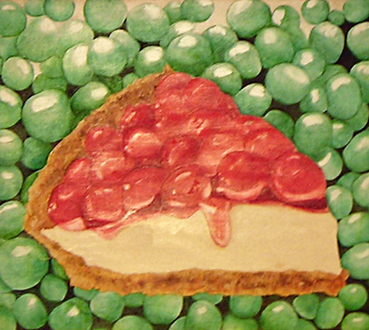
Greenstone's collage-like paintings, sometimes seen as paralleling pop art, are tangled with implications which make them uncomfortable in that glib category. In pop art there are a number of inherent "schools." First, there is the post-modern version, which retains a loyalty to formalism in that it confounds narrative conclusions. This starts, oddly, with Johns and Rauschenberg, who place obstacles in the paths of thematic resolution or even conjecture, and includes Lichtenstein, Rosenquist and, later, David Salle. Then there are those artists who make their belief systems more openly available to be dissected. They have roots in de Chirico and even John Heartfield and include England's Richard Hamilton, Joe Brainard, Warhol himself and John Baldessari. It is important to note that in 1963 her friend Paul Thek is making "T.V" and "movie" paintings and in 1964 is showing at the Stable Gallery with Robert Indiana, Andy Warhol and Cy Twombly.
In 1968, at Pratt Institute, she is a colleague of Richard Lindner, whose work is a certain pre-cursor to pop art. Greenstone's use of popular imagery is thus perfectly consistent with her background and natural development and is, in fact, consistent with her being a first-generation proponent of something approximating that approach. Her work bears repeated contemplation, yielding satisfying connections, and in its ability to coax story from imagery falls, amazingly, somewhere between Allan D'Arcangelo and Mark Rothko. A recent paper (Sharra Grow at Winterthur/University of Delaware Program in Art Conservation) shows that Greenstone, hardly a follower, used an image in 1964 subsequently used by Rosenquist in 1977.
Her later work, investigating shell, floral, water, sky and geological forms, is staggering in its unadulterated lyricism and disciplined execution. The pop images segue into entire situations. The "where" overtakes the "what" - always the sign of a great painter: brilliant and subtle colors, a mature and considered hand, exact shapes and accurate situations which sometimes recall O'Keefe but mostly are pure and ecstatic Greenstone. Arctic platelets and marbled atmospheres present themselves for our inspection. Rarely seen yellows and peach colors with slightly-off aquas retain a sobriety which is so unusual and so unsettling as to make us think we are looking at something new. We are. What other artist is both luscious and somber? Maybe Bonnard.
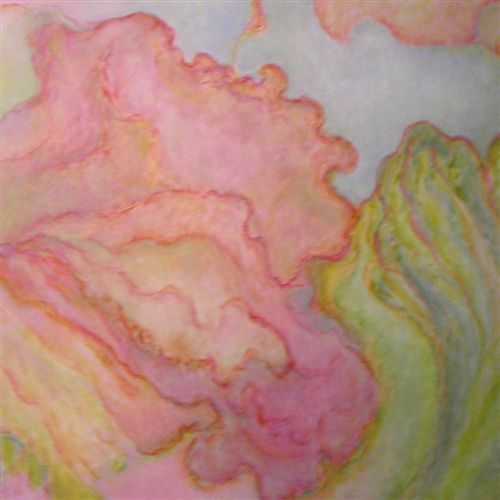
Her late period sends out, with each painting, a pulse of generous and wise ministering. One of my favorites is a large painting which appears to host a finely brushed orange circle that is surrounded by a few grey concentric lines. It seems like a poetic version of a Kenneth Noland "target" painting. Closer inspection yields a few very small circles annealed to one of the grey rings. Hmm, could it be the sun and its satellite planets? It took me a very long time to see this clearly abstract painting as a close-up of an accurately represented marigold submerged in a dish of water, the small circles being air bubbles. Even realizing this I am free to return to my astronomical reading - or see it as a simple design. The painting is that knowing, that profound, that unselfish.
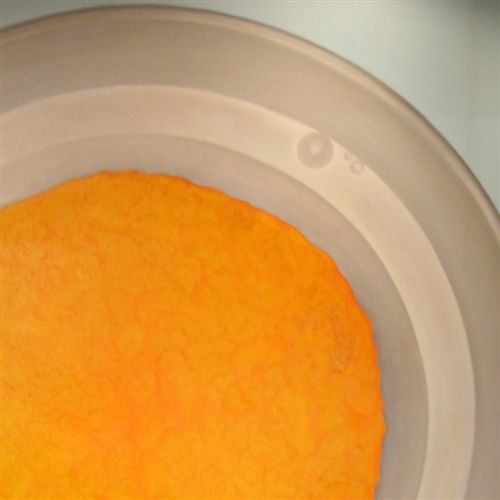
What is most arresting about all of Marion Greenstone's paintings, regardless of their format, is the quality of attention that radiates from her canvases. This reads to the viewer as a concentrated, unwavering caring. We have faith in her work and can fall into any situation she offers with assurance. Her paintings both proclaim the grandeur of authority and give the comfort, the security, which that calm declaration can provide. Cocteau said that art is a machine for the manufacture of love, and inevitably Greenstone's work is, at once, elegant, humble, charitable, guiding and loving. She was always aware that she had to create her own aesthetic parameters and did so, unfailingly, throughout her entire career. It is only fitting, now in the presence of these works, that we raise her from obscurity and deem her to be the master that she always was.
Back to top


